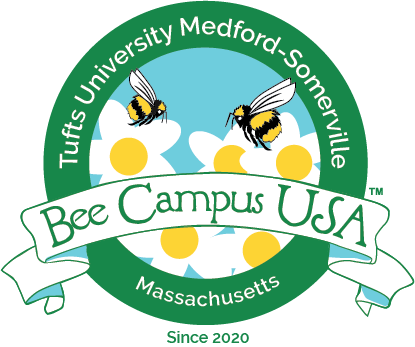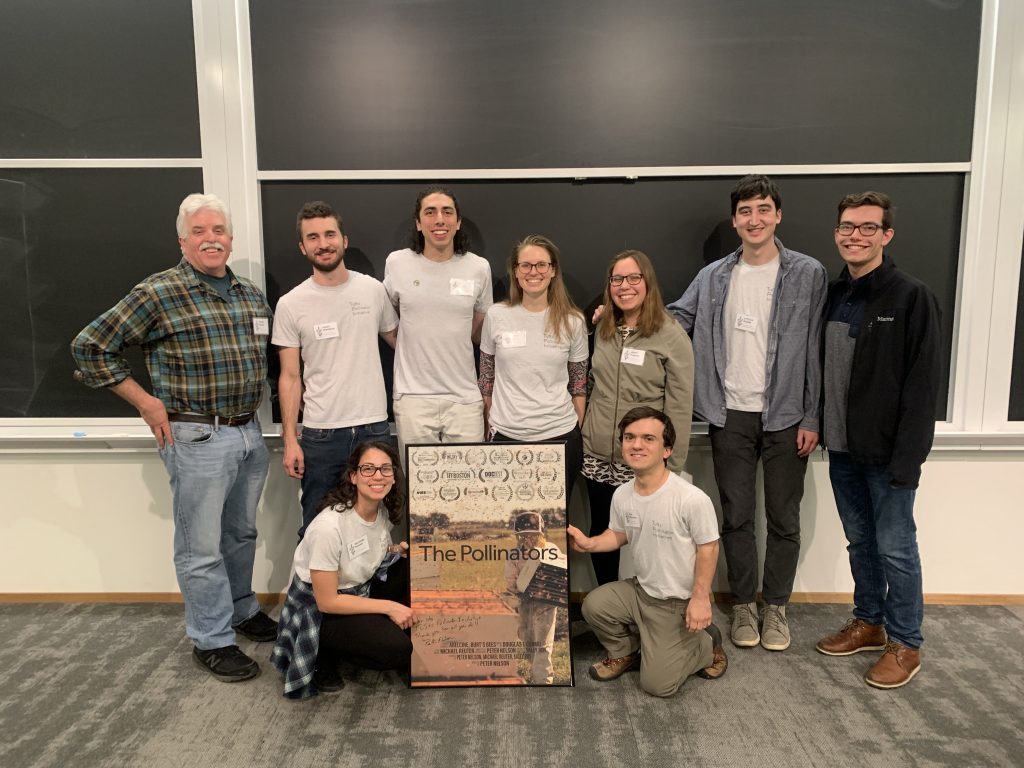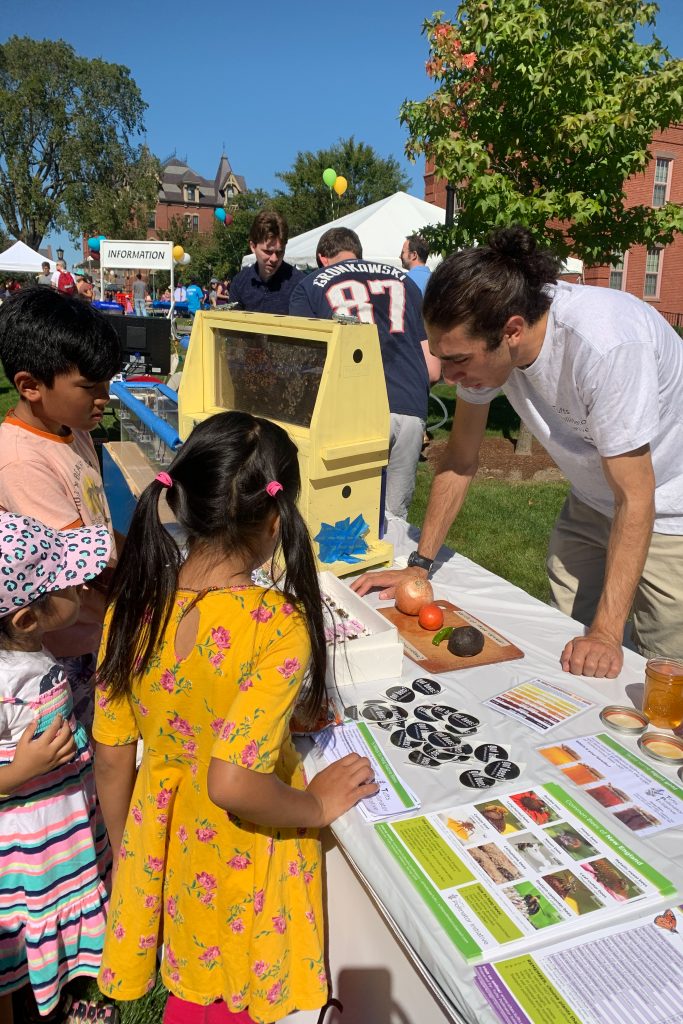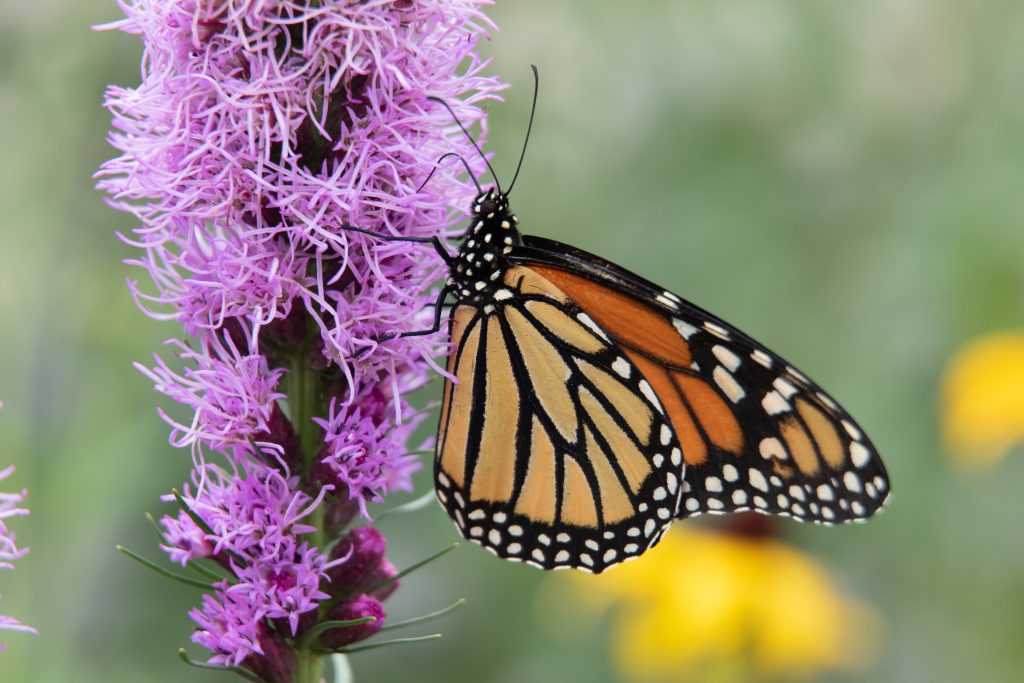Recently, news outlets have been spreading fear of the “murder hornet” invading the United States. To be clear, the “murder hornet”, actually known as the Asian giant hornet (Vespa mandarinia), does not pose a direct threat to humans. While a sting from this hornet may hurt, Asian giant hornets are generally not aggressive unless provoked. Stinging is a form of protection, and like any stinging insect, the Asian giant hornet is not out to sting you.
Instead, Asian giant hornets are after much smaller prey: honey bees. Asian giant hornets are carnivores, meaning they feed insects to their developing young. A honey bee colony, with tens of thousands of bees, is a great place to collect protein-rich food. In one foraging trip, one Asian giant hornet can kill up to 40 honey bees! As you might imagine, a whole colony of these hornets could be fatal to a honey bee colony.
In their native range of eastern and southeastern Asia, Asian giant hornets have been predating on Asian honey bees (Apis cerana) for a long time. In response, Asian honey bees have adapted a defense strategy: heat. When the hornet invader is detected, worker bees sound the alarm by shaking their abdomens. Then, in a swift, coordinated response, hundreds of honey bees swarm the hornet and contract their flight muscles, generating intense heat. Together, the worker bees heat the hornet to about 117 °F, killing the intruder. As it happens, the hornet can only withstand temperatures up to 115 °F, while Asian honey bee workers can withstand temperatures up to 118 °F. Evolution is a beautiful thing.
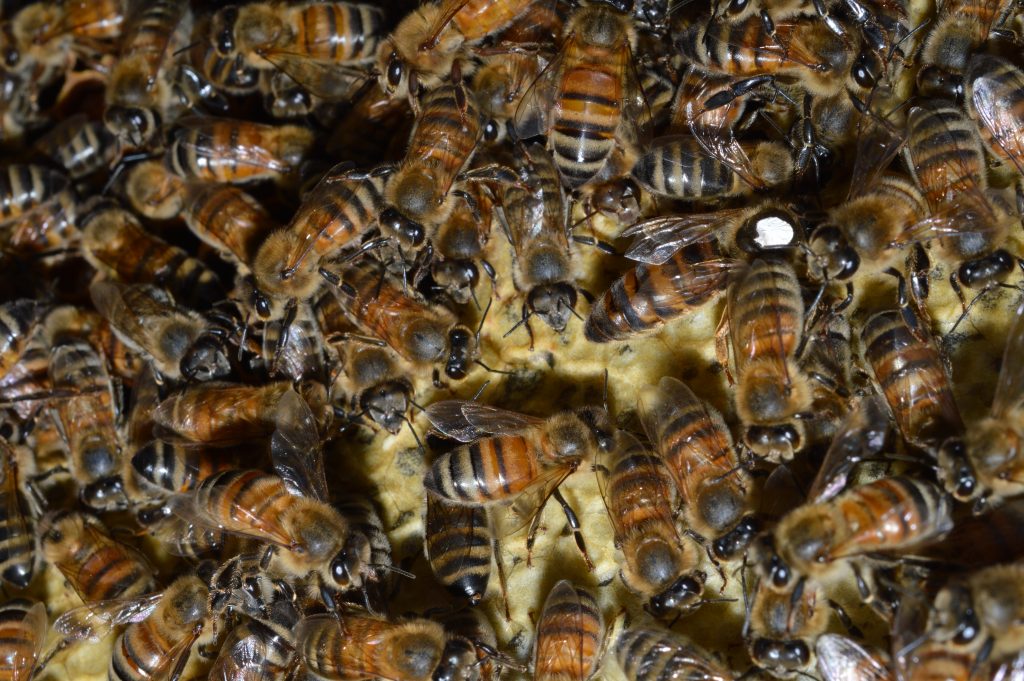
But, the Western honey bees (Apis mellifera) that are managed in North America have not evolved with this predator and are not as well equipped to defend themselves. This is why we need to be worried about the Asian giant hornet. Managed honey bees provide valuable economic and ecosystem services such as beekeeper livelihoods and agricultural pollination—the Asian giant hornet jeopardizes the security of these services.
While this is certainly cause for concern, panic is unwarranted. Since August 2019, the Asian giant hornet has been spotted just three times in Washington State and three times in British Columbia. Following a recent report of a honey bee colony death that resembled the work of this hornet in Washington (although it is unconfirmed), Washington State Department of Agriculture entomologists are on the hunt to stop the hornet before it spreads.
Fortunately, Asian giant hornets have not been spotted on the east coast, and it would likely take a while for them to get here. As with any introduced species, however, attempts should be made to spot the hornets early on. If you think you have seen an Asian giant hornet in Massachusetts (which is currently highly unlikely) you can report a sighting to the Massachusetts Introduced Pests Outreach Project.
Identifying Asian giant hornets: The European hornet (Vespa crabro) is often confused for the Asian giant hornet. There are three main differences between these hornets:
- Size The Asian giant hornet is slightly bigger than the European hornet (photos not to scale, enlarged for detail).
- Stripes The Asian giant hornet has regular black-orange stripes along its abdomen; the European hornet has irregular brown-yellow stripes.
- Head The Asian giant hornet has an orange head; the European hornet has a golden yellow head.
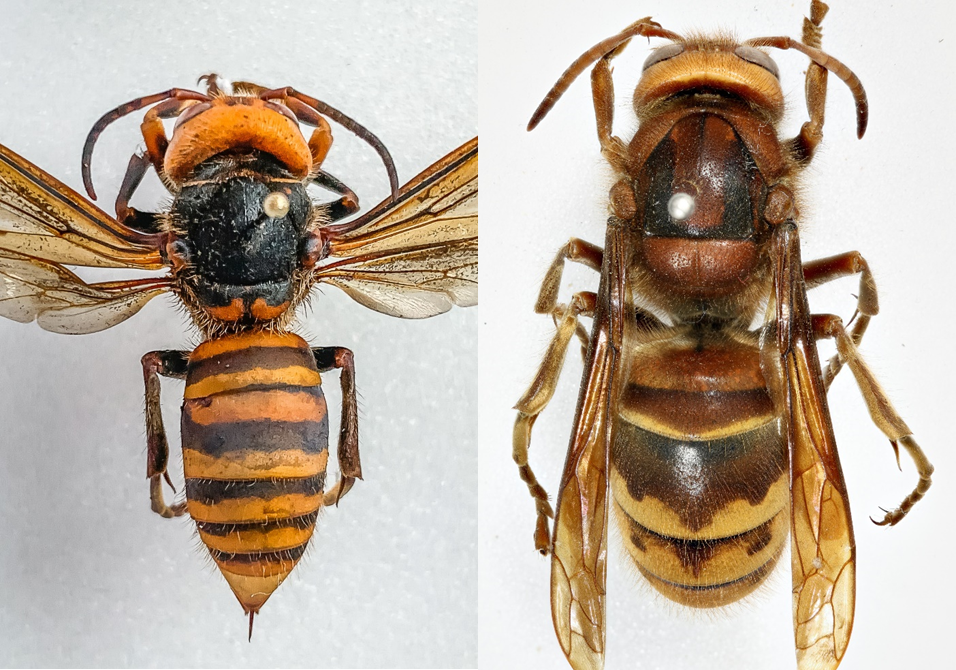
RIGHT: European hornet, Chris Moody, Flickr
To learn more about the Asian giant hornet, please read this USDA report instead of news articles. To learn more about how you can help mitigate the establishment of introduced species in general, check out these resources:
- U.S. Department of the Interior, Invasive species: finding solutions to stop their spread
- National Park Service, Invasive and non-native species: stop the spread
- The Nature Conservancy, Invasive species: what you can do
- Alliance for the Chesapeake Bay, 10 ways you can prevent the spread of invasive species



